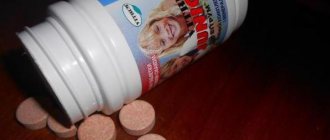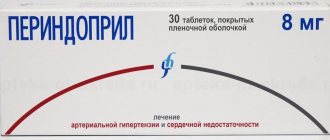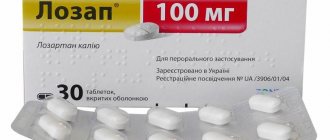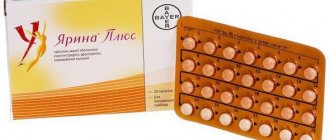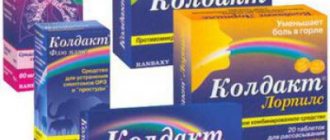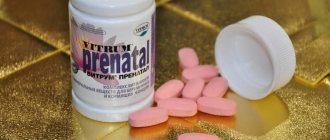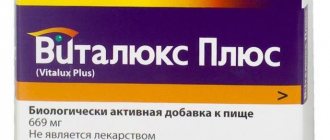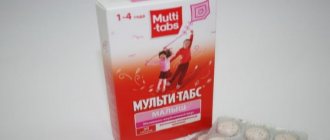- How to use?
As you know, a growing body needs additional nutrients more than an adult. The vitamins in the Vitrum line for children are balanced complexes that have a beneficial effect on the growth and development of children belonging to different age groups. It is known that several varieties of the drug have been developed for children in the line. This division is determined by the fact that, being in different age categories, children need certain valuable elements.
Release form and composition
Vitrum Kids is available in the form of chewable tablets. The tablets look like animal figures and are colored from light pink to dark pink, with darker and lighter inclusions. The taste and smell of the tablets is light fruity.
The drug is packaged in polyethylene bottles of 30, 60 or 90 tablets. Each bottle is sealed with a foil safety valve and a polyethylene screw cap. One bottle is placed in a cardboard box.
Composition of active ingredients per tablet:
- calcium (calcium carbonate) – 100 mg;
- iron (iron fumarate) – 15 mg;
- phosphorus (magnesium phosphate) – 50 mg;
- zinc (zinc oxide) – 10 mg;
- magnesium (magnesium phosphate) – 40 mg;
- copper (copper oxide) – 1 mg;
- chromium (chromium aminoate) – 0.02 mg;
- iodine (potassium iodide) – 0.15 mg;
- selenium (sodium selenate) – 0.025 mg;
- manganese (manganese citrate) – 1 mg;
- ascorbic acid – 60 mg;
- calcium pantothenate – 5 mg;
- nicotinamide – 13.5 mg;
- thiamine mononitrate – 1.05 mg;
- cyanocobalamin – 0.0045 mg;
- retinol acetate – 2500 IU;
- folic acid – 0.3 mg;
- colecalciferol – 400 IU;
- biotin – 0.02 mg;
- alpha-tocopherol acetate – 15 IU;
- pyridoxine hydrochloride – 1.05 mg;
- riboflavin – 1.2 mg.
Auxiliary components of chewable tablets: magnesium stearate, sucrose, strawberry flavor, stearic acid, charming red dye, colloidal silicon dioxide, sucralose.
Reviews
The main advantages that parents note when their children use these multivitamins are:
- pleasant taste, no specific smell;
- release of a complex for preschool children in the shape of wild animals;
- absence of dyes in the composition;
- adequate cost;
- strengthening physical condition;
- increased mental activity;
- increasing stress resistance;
- increasing the body's ability to resist viral and cold infections.
You can purchase these multivitamins at any pharmacy kiosk. They are dispensed without a doctor's prescription, however, his consultation is very important before using them.
Reviews about Vitrum Kids
According to reviews, Vitrum Kids is recommended for use by about 89% of users. The drug has a good composition and contains all the essential vitamins and minerals needed in childhood. The result of use is noticeable already while taking vitamins. The packaging is convenient, beautiful and attractive in appearance. Chewable tablets in the shape of animals are very popular with children; they taste and smell pleasant. Vitrum Kids normalizes appetite, increases immunity, improves sleep, and promotes better mental and physical development of the child. The drug rarely causes allergies.
Some patients do not like the taste and smell of the tablets. There are also some reports that vitamins are difficult to chew. In addition, there are reviews about the lack of effectiveness of the drug and the occurrence of allergies. For some, the disadvantage is the cost of the complex, since it is more expensive than some analogues.
Instructional recommendations
Vitrum vitamins for children are a real find for parents. They are produced by an American pharmacological company that has won the trust of consumers around the world. Parents who prefer vitamin complexes from this line have virtually no complaints when using them.
How to use?
Before using any multivitamin, you should consult your doctor. Only he, taking into account the individual characteristics of the child, can suggest a regimen for taking this or that vitamin supplement. If the complexes are used for prophylaxis, they are taken for a month, one tablet per day. It is advisable not to chew the capsules, but to swallow them whole. It is recommended to drink them with a sufficient amount of purified liquid, that is, water. If necessary, the monthly course of treatment can be repeated.
Contraindications
Vitamins classified as children's, belonging to the Vitrum series, have certain contraindications for use. These include:
- kidney and liver diseases;
- heart diseases;
- stomach ulcer;
- tuberculosis;
- individual intolerance to drug components;
- fructose intolerance;
- metabolic disorders associated with the content of copper and iron in the growing body.
It is precisely because multivitamins have certain contraindications that prohibit their use that you should consult a doctor for advice on this issue.
Side effects
Children rarely experience side effects when using complexes. Sometimes allergic reactions occur in different types. In case of an overdose of vitamins, the child’s condition usually worsens sharply and is accompanied by symptoms such as:
- diarrhea;
- stomach pain;
- nausea turning into vomiting;
- dizziness;
- severe headaches;
- increased sweating;
- hair loss;
- heart rhythm disturbances and others.
If one or more symptoms occur, you should visit a doctor and stop using the complex for a while. Perhaps it is not suitable for the child at all. Then you should pay attention to a drug with a similar effect.
Properties
Vitamin A is necessary for the normal course of metabolic processes, including the regulation of growth and development of the body. Ensures normal function of the organ of vision, structural integrity of tissues, increases the body's resistance to the action of harmful environmental factors.
Vitamin D 3 increases the absorption of calcium in the intestine and the reabsorption of phosphorus in the renal tubules, normalizes the formation of the bone skeleton and teeth in children, and helps preserve bone structure.
Vitamin E is an active antioxidant, inhibits LPO, which increases in many diseases, and prevents damage to cellular structures by free radicals. Participates in the processes of tissue respiration, biosynthesis of heme and proteins, metabolism of fats and carbohydrates, cell proliferation and other metabolic processes.
Vitamin C has pronounced restorative properties. Participates in redox processes, regulation of carbohydrate metabolism, affects the metabolism of aromatic amino acids, thyroxine metabolism, biosynthesis of catecholamines, steroid hormones and insulin; necessary for blood clotting, collagen and procollagen synthesis, connective and bone tissue regeneration. Normalizes capillary permeability. Promotes the absorption of iron in the intestines and participates in the synthesis of hemoglobin. Increases the body's nonspecific resistance and has antioxidant properties.
Vitamin 1 is necessary for the normal functioning of the nervous, digestive systems, cardiac activity and endocrine glands.
Vitamin B 2 is involved in growth processes. Supports the process of phagocytosis, affects the morphology and function of the central nervous system and the autonomic nervous system, plays an important role in maintaining normal visual function of the eye and in the synthesis of erythropoietin and hemoglobin. Increases the secretory function of the stomach, improves bile secretion, facilitates the absorption of carbohydrates in the small intestine, and is necessary for maintaining normal intestinal microflora. Improves liver function, promotes insulin incretion.
Vitamin B 6 is part of enzymes involved in the processes of decarboxylation and transamination of amino acids and lipid metabolism. Necessary for the normal functioning of the central nervous system and peripheral nervous system.
Vitamin B 12 has high biological activity and is involved in hydrocarbon, protein, and fat metabolism. Increases tissue regeneration, normalizes hematopoiesis, liver and nervous system functions.
Folic acid is necessary for the normal maturation of megablasts and the formation of normoblasts. Stimulates erythropoiesis, participates in the synthesis of amino acids, nucleic acids, purines and pyrimidines, as well as in choline metabolism.
Nicotinamide substrate stimulates the synthesis of nicotine adenine dinucleotide (NAD) and nicotine adenine dinucleotide phosphate (NADP). In the form of NAD and NADP, it accepts and transfers protons in many redox reactions, ensuring the normal course of many types of metabolism, including energy.
Pantothenic acid stimulates the formation of corticosteroids. It is a substrate for the synthesis of acetylation coenzymes. Participates in carbohydrate and fat metabolism, the synthesis of acetylcholine, corticosteroids, optimizes the energy supply of myocardial contractility, improves regeneration processes.
Biotin (vitamin H) is part of enzymes that regulate protein and lipid metabolism. It is a coenzyme of carboxylation, therefore it is necessary for the synthesis of higher fatty acids and oxaloacetic acid. Participates in the synthesis of purines, which are part of nucleic acids and nucleotides.
Calcium ions are involved in the transmission of nerve impulses, in the contraction of skeletal and smooth muscles, myocardium, in blood sedimentation, in the formation and preservation of the integrity of bone tissue.
Phosphorus is part of nucleotides, nucleic acids, phosphoproteins, phospholipids, coenzymes, enzymes, and is an important element in the composition of bones and tooth enamel.
Magnesium regulates metabolic processes, neurochemical transmission and muscle excitability, reduces the amount of acetylcholine in the central nervous system and peripheral nervous system.
Iron is part of hemoglobin, myoglobin, cytochromes, participates in redox reactions, and plays an important role in hematopoietic processes.
Copper plays an important role in redox reactions and protecting the body from free radicals.
Zinc is involved in the synthesis of DNA, insulin, the synthesis and breakdown of RNA, in the metabolism of lipids and proteins, promotes the normal functioning of T-lymphocytes, giving them an immunomodeling property. Has antioxidant properties.
Iodine is part of the thyroid hormones involved in the regulation of metabolic processes in the body, the activity of the brain, nervous and cardiovascular systems, the growth and development of the child, and the formation of his intellectual abilities.
Manganese plays an important role in a number of physiological processes as a component and activator of a number of enzymes, including superoxide dismutase (the main antioxidant enzyme of mitochondria).
Selenium supports the function of selenium-containing enzymes: glutathione peroxidase (metabolizes hydroperoxides of unsaturated fatty acids) and enzymes involved in the deiodination of thyroid hormones, is an antioxidant, and functions together with vitamin E.
Warning
It should not be used by children with individual intolerance to the components of the product or impaired carbohydrate metabolism. Chewable tablets should not be swallowed whole. Adults should give them to children. Take with other dietary supplements only on the advice of a physician.
Taking dietary supplements is not a substitute for a healthy lifestyle and nutritious diet. Before use, you should consult your pediatrician. Children with thyroid disease should consult an endocrinologist. Do not exceed the recommended daily dose. Do not consume after the expiration date indicated on the package.
Not a medicine.
Recommendations for use
Vitamin-mineral complex of 12 vitamins and 9 minerals in chewable tablets with a pleasant strawberry flavor - can be recommended for use in children’s diets as an additional source of vitamins: A, D3, E, C, B1 B2, B6, B12, B3 (nicotinamide ), B5 (pantothenic acid), folic acid, D-biotin and minerals: calcium, magnesium, iron, zinc, manganese, copper, iodine, selenium.
Replenishing the lack of vitamins and minerals in children aged 3–7 years.
Helps maintain the optimal composition of the child’s diet, promotes:
- proper physical and intellectual development of the child;
- strengthening the child’s body’s defense mechanisms during the season of colds;
- maintaining the optimal functional state of the nervous system during the period of adaptation to kindergarten.
